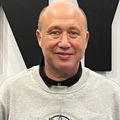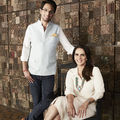Interviews
News Flash
Study on [TC]² 3D body scanning & DEXA scanning
01 Jul '11
3 min read
Dr. Stephen Ball at the University of Missouri is a leading researcher in the area of body composition. For years he has been studying various approaches for determining body composition and its relative effectiveness and accuracy. In 2010, Dr. Ball and researcher Justin Ryder did a significant first study of body composition using the Textile/Clothing Technology Corp - [TC]² 3D body scanner on over 100 male subjects, comparing it to DEXA scanning and BodPod measurement.
"There are several field and laboratory techniques for measuring body composition, but few are accurate, comfortable, non-invasive and do not require a highly trained technician," said Steve Ball, associate professor of exercise physiology in the University of Missouri College of Human Environmental Sciences. “Two of the most effective laboratory methods for assessing body composition are dual energy X-ray absorptiometry (DXA, pronounced "dexa"), which is considered the "gold standard"; and the Bod Pod, which measures air displacement and body volume. The [TC]² 3-D body scanner, originally developed to measure clothing sizes, is a new method that might be a more cost-effective system to measure body fatness. No previous study has compared body composition measurements from the [TC]² 3-D body scanner to DXA or the Bod Pod to determine its efficacy.”
This original study only utilized a small portion of the [TC]² Body Scanner measurement functionality, which were a small set of manual measurements developed by the US Dept of Defense for body fat indications. Even so, the results were highly encouraging as to the possibility of getting good body fat composition correlation to DEXA using [TC]²'s white light 3D body scanning.
Beginning early this year, the University of Missouri researchers and [TC]² began an informal collaboration to expand the measurement base from the body scanner referenced in developing the correlations to DEXA scans. These measurements in include key body circumferences in the arms, legs, and torso along with body shape proportions (width and depth relations) as well as body volumes. Using an expanded set of 19 measurements such as these in combination, very close average correlations of less than 1 percent difference have been achieved on the original 2010 test sample group – providing great hope that 3D body scanning can become an even more valuable resource for health and fitness indications.
This is a key finding because current highly regarded techniques such as DEXA (low density X-Ray), Underwater weighing, or BodPod measurement are slow, expensive, and invasive in one way or another – which prevents them from being adopted for widespread use. The [TC]² 3D body scan process takes less than 10% of the time, is much lower cost, and can be done in a completely private environment compared to these other techniques.
"There are several field and laboratory techniques for measuring body composition, but few are accurate, comfortable, non-invasive and do not require a highly trained technician," said Steve Ball, associate professor of exercise physiology in the University of Missouri College of Human Environmental Sciences. “Two of the most effective laboratory methods for assessing body composition are dual energy X-ray absorptiometry (DXA, pronounced "dexa"), which is considered the "gold standard"; and the Bod Pod, which measures air displacement and body volume. The [TC]² 3-D body scanner, originally developed to measure clothing sizes, is a new method that might be a more cost-effective system to measure body fatness. No previous study has compared body composition measurements from the [TC]² 3-D body scanner to DXA or the Bod Pod to determine its efficacy.”
This original study only utilized a small portion of the [TC]² Body Scanner measurement functionality, which were a small set of manual measurements developed by the US Dept of Defense for body fat indications. Even so, the results were highly encouraging as to the possibility of getting good body fat composition correlation to DEXA using [TC]²'s white light 3D body scanning.
Beginning early this year, the University of Missouri researchers and [TC]² began an informal collaboration to expand the measurement base from the body scanner referenced in developing the correlations to DEXA scans. These measurements in include key body circumferences in the arms, legs, and torso along with body shape proportions (width and depth relations) as well as body volumes. Using an expanded set of 19 measurements such as these in combination, very close average correlations of less than 1 percent difference have been achieved on the original 2010 test sample group – providing great hope that 3D body scanning can become an even more valuable resource for health and fitness indications.
This is a key finding because current highly regarded techniques such as DEXA (low density X-Ray), Underwater weighing, or BodPod measurement are slow, expensive, and invasive in one way or another – which prevents them from being adopted for widespread use. The [TC]² 3D body scan process takes less than 10% of the time, is much lower cost, and can be done in a completely private environment compared to these other techniques.
Textile/Clothing Technology Corp [TC]²
Popular News
Leave your Comments
Editor’s Pick
Christian Guinet
French Textile Equipment Manufacturers’ Association (UCMTF)
Siddhaarth Oberoi
Siddhaarth Oberoi Shirts (SOS)
Anita Dongre & Yash Dongre
House of Anita Dongre Limited
































-Ltd..jpg?tr=w-120,h-60,c-at_max,cm-pad_resize,bg-ffffff)





.jpg?tr=w-120,h-60,c-at_max,cm-pad_resize,bg-ffffff)
.jpg?tr=w-120,h-60,c-at_max,cm-pad_resize,bg-ffffff)






